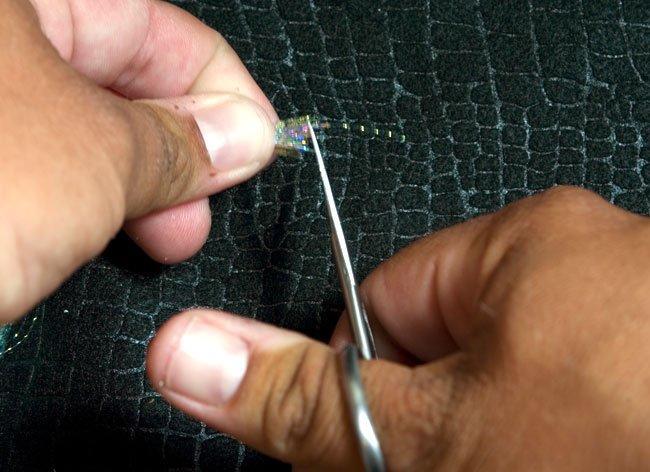If someone hands me a chocolate chip cookie and tells me it’s a chocolate chip cookie, but it doesn’t look anything like a chocolate chip cookie, I’m going to be leary about eating it. I’m going to inspect it. I’m going to sniff it, feel it, just try to figure out if it’s really something I want to eat. If it doesn’t smell like chocolate chip, doesn’t look like it and doesn’t feel like one, I’m going to pass.
Now you take the same scenario with a cookie that looks like a super chocolate chip cookie, and it’s a different story. Big chocolate chips, melting inside the warm cookie, and I’m all over it like … well a fat kid on a big thundering chocolate chip cookie.
So is it so hard to believe a bass isn’t reacting to a bait when we jerk it, twitch it, pop it, pull it, or drop it around its face if it doesn’t have that extra little kick that tells the fish this is something alive he wants to eat? Sometimes we’re just looking for one advantage, something the fish react to that trips their trigger and makes them become totally enamored with eating our offering.
We spend a lot of time customizing lures here at Wired2Fish. Trimming skirts on jigs, dipping tails of plastics in die, adding chartruese or red markings on crankbaits, and of course adding tail feathers or teaser tinsel to fishing hooks to give a bait an extra kick or flash to make it look alive and edible to a fish.
We’ve had a lot of success lately on some baits which we’ve added a quick and easy dressing to their treble hooks. This is just a simple customization that can really add some kick to your favorite reaction baits.
You basically need the following items:
- A favorite treble hook
- A skirt collar for making jig or spinnerbait skirts
- A material like Flashabou, feathers, deerhair or something for dressing
- A pair of scissors
Step 1:
Take your strands of material or feather and line them up and pinch them between your finger and your thumb. You don’t need a thick dressing here as you’re going to double it on itself. So if you want a 3 inch dressing you need 6-inches of material. It doesn’t have to be thick because after you double it over it will be twice as thick.
Step 2:
Trim the material to make a tight straight edge that you can feed through the eye of your favorite treble hook. We’ve been using both Gamakatsu and Mustad trebles a lot lately. The amount of strands will vary with how large your hookeye is. Too much and you can’t pass it through. Some materials you can wet to make them pass through easier.
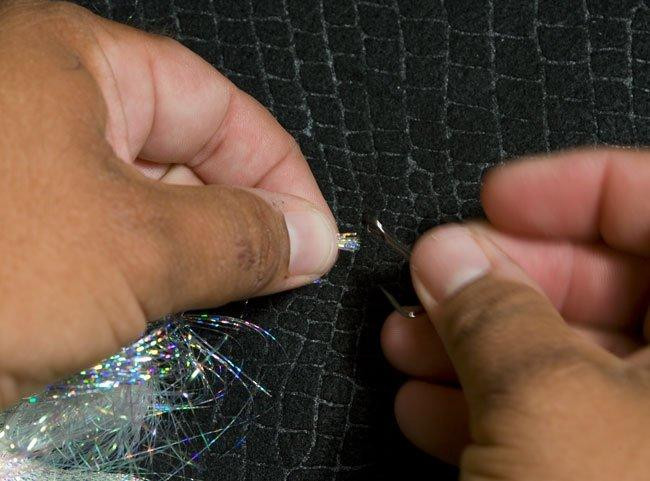
Step 3:
Pass the material through the hookeye until the hook is right in the middle of your strands of material.
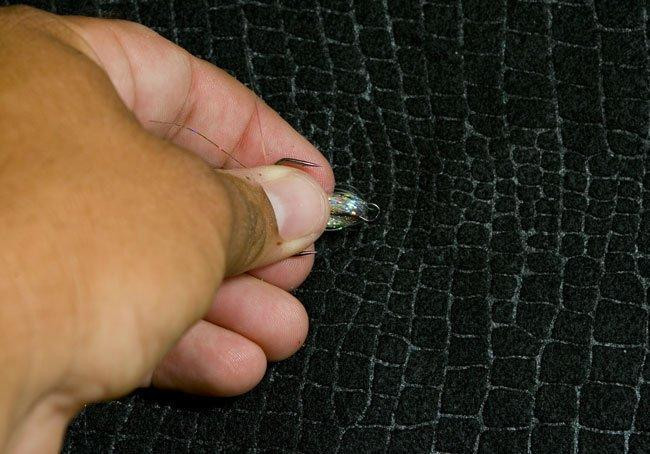
Step 4:
Fold the material down on either side of the hookeye down the shank of the hooks.
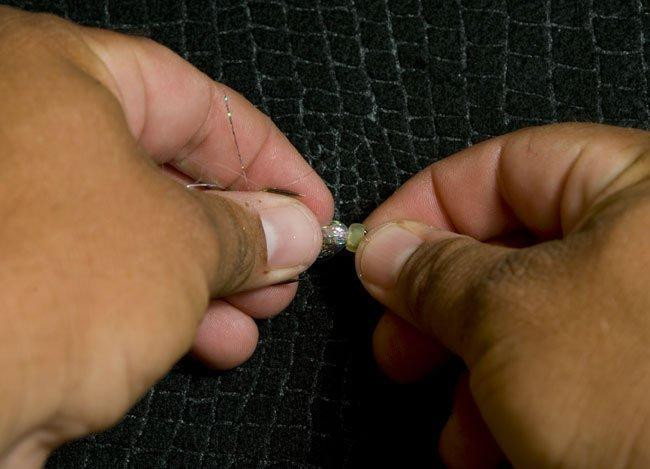
Step 5:
Take your skirt collar, we recommend the natural colored ones, and force the collar over the eye of the hook and down the shank to hold the material in place.
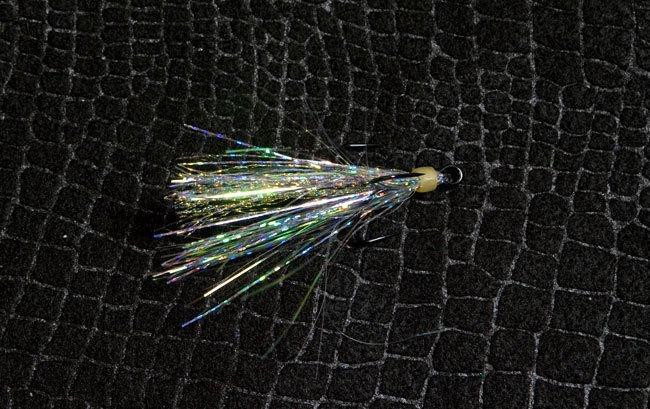
Now you have a treble hook with dressing on it in a matter of about a minute or less. It’s not made to last forever, but honestly, hooks dull over time. The more fish you catch, the more you’ll need to change the hooks. This has been working well for us and the material and hooks are holding up to sometimes as many as 50 fish a day.
You can find materials at places like Jann’s NetCraft, Barlow’s Tackle, and Bass Pro Shops as well as many more we’re sure. It’s not expensive and you can dress a lot of hooks with just a little material.
What do you think? Something we’ve proven works well recently while fishing for bass with topwaters, and it’s quick and easy to customize a treble hook fishing lure.


